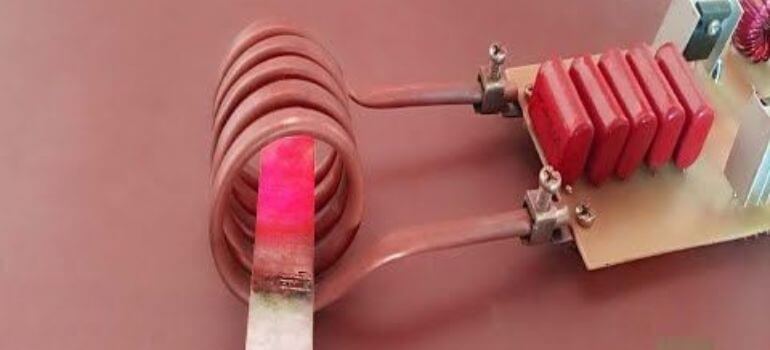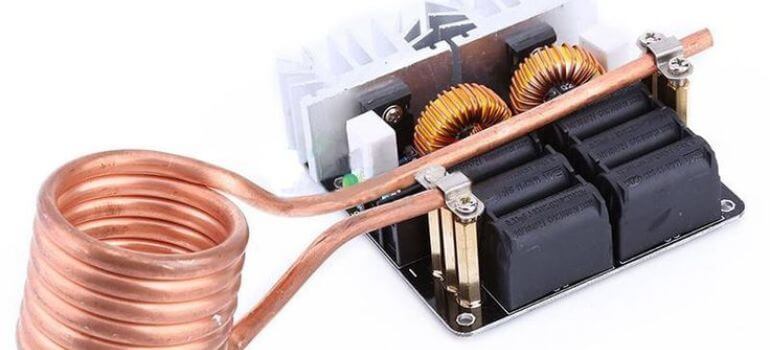In today’s world, electricity is an essential part of our lives. We use it for heating, cooling, cooking, and lighting. But what do you do when the power goes out, and you need a source of heat to stay warm? In this article, we will explore how to make a heater at home without electricity. This DIY project is not only cost-effective but also a great way to stay warm during emergencies or simply reduce your energy consumption.
Materials Needed
Before we delve into the step-by-step guide, let’s gather the materials required for this project:
Table 1: Materials
| Material | Quantity |
|---|---|
| Clay pots (various sizes) | 2 |
| Metal cans (empty) | 2 |
| Small candles | 4 |
| Bricks or stones | 4 |
| Aluminum foil | 1 roll |
| Matches or a lighter | 1 |
Creating Your Homemade Heater
Now that we have all the necessary materials, let’s move on to creating your homemade heater. Follow these steps carefully to ensure a safe and effective heating solution.
Table 2: Step-by-Step Guide
| Step | Description |
|---|---|
| Step 1: Gather Your Materials | Make sure you have all the materials listed in Table 1 ready. |
| Step 2: Prepare the Clay Pots | Take one of the clay pots and place a small candle inside it. Light the candle and let it burn for a few minutes. This will help secure it in place. |
| Step 3: Assemble the Heater Base | Place two bricks or stones on a stable surface, leaving enough space in between for the clay pots to sit. |
| Step 4: Position the Clay Pot | Carefully place the clay pot with the lit candle on top of the bricks or stones. Ensure it is stable and won’t tip over. |
| Step 5: Create the Reflector | Take one of the metal cans and remove the top and bottom. Cut it vertically to create a flat, rectangular piece of metal. This will act as a reflector. |
| Step 6: Attach the Reflector | Place the metal reflector behind the clay pot with the candle. This will help direct the heat forward. |
| Step 7: Repeat for Additional Heat | You can create multiple heaters by repeating steps 2 to 6. Place them strategically in your room for maximum warmth. |
| Step 8: Use Aluminum Foil | To enhance the heating efficiency, line the inside of the clay pot with aluminum foil. This will reflect the heat back into the room. |
| Step 9: Safety First | Always keep a close eye on the candles and never leave them unattended. Ensure the heater is placed on a non-flammable surface. |
| Step 10: Enjoy the Warmth | Light the candles, and you will start feeling the room getting warmer in no time. Enjoy your DIY heater without electricity! |
Additional Tips for Using Your DIY Heater
While you now know how to make a heater at home without electricity, there are a few additional tips to make the most out of your DIY heating solution:
Room Insulation:
Ensure that your room is adequately insulated to trap the heat generated by the DIY heater. Seal any drafts or gaps in windows and doors to prevent heat from escaping.
Use Thermal Curtains:
Invest in thermal curtains to further enhance heat retention in your room. These curtains can help keep the warmth inside and the cold air out.
Keep a Safe Distance:
Maintain a safe distance between the heater and any flammable materials, including curtains, furniture, and papers. Safety should always be a top priority.
Ventilation:
While it’s essential to keep your room warm, don’t forget about ventilation. Ensure there is a source of fresh air to avoid a buildup of carbon dioxide and maintain a healthy indoor environment.
Regular Maintenance:
Periodically check the condition of your DIY heater. Replace candles, clean the clay pots, and ensure there are no obstructions in the reflector to maintain its efficiency.
Eco-Friendly Heating Alternative

Not only does your homemade heater provide an emergency heating solution, but it’s also an eco-friendly choice. By reducing your reliance on electricity for heating, you’re contributing to a more sustainable future. It’s a small step towards minimizing your carbon footprint.
Exploring Alternative Heating Methods
While your homemade heater is a fantastic solution, there are other alternative heating methods to consider as well:
Solar Heaters:
Harness the power of the sun with solar heaters. These devices capture solar energy to heat air or water, which can then be circulated to provide warmth throughout your home. Solar heaters are not only eco-friendly but can also save you money on your energy bills.
Wood-Burning Stoves:
If you have access to wood, a wood-burning stove can be an excellent option. It provides efficient heat and can be used for cooking as well. Make sure to follow safety guidelines and have proper ventilation in place.
Rocket Mass Heaters:
Rocket mass heaters are highly efficient and use a small amount of wood to generate a significant amount of heat. They are designed to capture and store heat, making them an eco-conscious choice.
Pellet Stoves:
Pellet stoves burn small, compressed wood pellets to produce heat. They are clean-burning and energy-efficient, making them a popular choice for alternative heating.
Electric Space Heaters:
While not entirely without electricity, modern electric space heaters are energy-efficient and can be a practical choice for supplemental heating in specific rooms.
Geothermal Heating:
For a more extensive and sustainable solution, consider geothermal heating systems. They use the stable temperature of the Earth to provide both heating and cooling for your home.
Conclusion
Creating a heater at home without electricity is not only a practical solution during power outages but also a sustainable way to reduce your energy consumption. By following the steps outlined in this article, you can stay warm and cozy while also contributing to a greener planet.
FAQs
Yes, as long as you follow safety precautions, such as placing it on a non-flammable surface and keeping a close eye on the candles.
The duration of the candles varies depending on their size, but on average, they can burn for 4-6 hours.
It’s best to use unscented candles to avoid inhaling potentially harmful chemicals released by scented candles.
Yes, you’ll need to replace the candles as they burn out. Make sure to have a supply of candles on hand.
While it can provide some warmth, it’s not recommended as the primary heating source. It’s more suitable for supplemental heating during emergencies or to reduce energy consumption.



